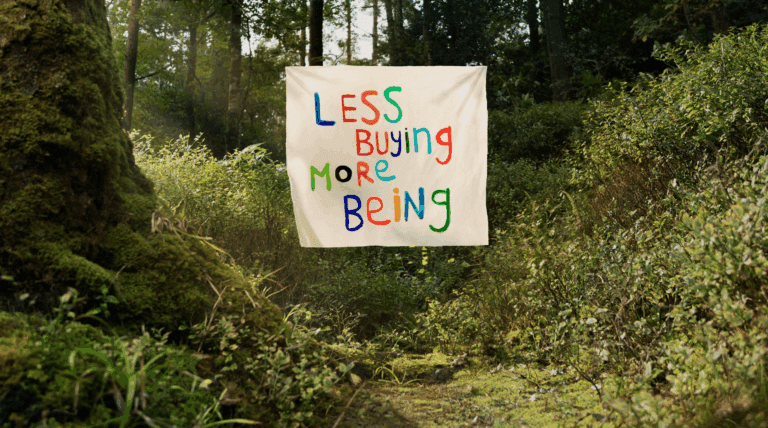Image courtesy of Carbon Click.
This blog is a part of the Frontier Series, a collaboration between SCORAI and the Hot or Cool Institute that brings you lessons learned, personal experiences and insights from the cutting edge of climate and sustainability research and practice.

Just a few weeks ago, climate change had re-emerged to jostle with the pandemic for top spot in the public’s list of ‘things to worry about’. Mainstream media were again urging ordinary citizens to limit their use of fossil fuels– walk, cycle, or take transit to work; fly less; insulate your houses, etc., etc. Concerned individuals re-committed to low-carbon lifestyle choices; electric cars, bicycles and even skate-boards seemed more evident on the streets. Environmental and student organizations became yet more strident in petitioning universities, businesses, and banks to divest from fossil fuels providers and vilifying insurance companies for underwriting oil and gas exploration/development projects.
And why not? We are, after all, in climate crisis and proponents of so-called green renewable energy tell us that a global transition to 100% renewable energy by 2050 is not only technically possible, but also cost-effective. Who needs carbon-emitting fossil fuels? All we lack for the renewable energy techno-miracle to happen is political will. Little wonder that civil society organizations were outraged that world governments again failed to adopt the policy changes necessary to wean society from fossil fuels at the COP26 conference last November.

That was then; it isn’t now. With Vladimir Putin’s invasion of Ukraine on 24 February 2022, the world tipped into an inverted parallel universe. Other nations’ shocked response to Russia’s aggression quickly blocked 3% of global oil supplies from reaching markets (Russia accounts for ~10% of world production). Panic set in. By mid-March UK Prime Minister, Boris Johnson, was off hat-in-hand to persuade Saudi Arabia to open the oil tap to ease Europe’s potential energy pain (The EU gets a quarter of its petroleum and 40% of its gas from Russia). US President Biden and Canadian Prime Minister Trudeau were soon in Europe promising to help by increasing their own exports of oil and gas. The US was even negotiating lifting trade sanctions on the previously-shunned Venezuelan regime in exchange for a portion of anticipated increased oil exports.
The war has rudely reminded the world that everything is energy-dependent—prices for fossil fuels, even coal, have surged; inflation stalks the world economy; just-in-time global supply chains are further stressed; commodity and goods shortages are increasing; fertilizer markets, heavily dependent on Russian and Ukrainian fossil fuels feed-stocks, balloon ever-higher, raising concerns about global food security and even geopolitical stability.
It’s all about energy supply!
Relatively silent in all this are the purveyors of wind turbines and solar panels, the leading technologies in our supposedly all-renewable energy future. True, a few renewable energy proponents tout the Ukrainian war as an opportunity for it to displace Russian oil and gas, but the fact is that modern renewable energy has little to offer in the immediate crisis.
Instead, Europe is reopening retired gas and coal-fired power stations; Germany even briefly considered keeping some nuclear plants on line. Meanwhile, prices for wind turbines and solar panels themselves are rising!
How can this be?
Numbers tell the story. Despite nearly three decades of double-digit growth and continuous promotional hyperbole, wind and solar still provided only 4.2% of global primary energy and about 9.1% of electricity in 2020. Fossil fuels came in at 83% and 61% respectively. Scaling up renewable energy to dislodge fossil fuels and meet IPCC climate targets is therefore beyond daunting. To replace just 50% of global fossil fuel use with electricity by 2030 would require that the world replicate ~1.1 times the entire cumulative global inventory of wind farms and solar panels every year for the next eight years. Repeat by 2050. This generously assumes that one unit of electricity is equivalent to 2.7 units of fossil energy; that renewable-resistant highway [diesel truck], air and marine transportation, and high-heat industrial processes suddenly become easy-to-electrify; that electric equivalents can readily replace the global inventory of fossil fuels-using machines; that there will be no growth in global demand for energy and no resource supply issues. All this in a real world expecting two billion more people, a 50% increase in energy demand by 2050, untold ecological damage from an anticipated explosion in mining/smelting, and rare-but-essential mineral and metal shortages.
And did I mention that the entire renewable energy sector—from mine-site, through refining, manufacturing, installation, operation, and decommissioning—itself remains heavily dependent on carbon-emitting fossil fuels?
Not only is fossil fuel still energy king, but even the wannabe emperor-in-waiting is dressed in oily rags.
Bottom line: Quantitative displacement of fossil fuels by ‘green’ renewable energy cannot happen on a climate-friendly schedule in a growth-obsessed economy and—sorry—most likely not at all. Business-as-usual-by-alternative-means is not a viable option; techno-fixes are seductive illusions.
So, here’s the conundrum: modern techno-industrial society is addicted to abundant cheap energy, primarily fossil fuels, and is sleep-walking into eco-disaster. To avoid climate catastrophe, we must abandon fossil fuels but there are no quantitative substitutes. (Get used to a low-energy future.) To complicate matters, global warming is not even the primary threat, ecological overshoot is. There are too many people—particularly wealthy people—consuming and polluting too much; humans are destroying the biophysical basis of their own existence. Climate change, plunging biodiversity, tropical deforestation, soil/land degradation, pollution of everything, etc., etc., are all co-symptoms of overshoot and none can be solved in isolation from the others.
The good news is that addressing overshoot directly would treat all symptoms simultaneously; the bad news is that this implies a significant contraction of the human enterprise. (In overshoot, mere income/wealth distribution isn’t enough.) We are now in taboo territory, but is it really so hard to comprehend that, on a finite planet in overshoot, sustainable production and consumption means less production and consumption?
It is no tribute to humanity’s collective intelligence that it takes a war to fully sound the alarm. But are we finally sufficiently ‘eco-woke’ to embark on the international cooperative effort needed to plan for one-planet living: a global community of smaller regional populations living more equitably in economic and ecological security well within the biophysical means of nature?
An imaginative stretch, yes, but what’s not to like?





